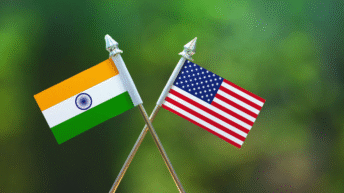
Every year, the first Saturday of September is observed as International Vulture Awareness Day (IVAD). This year the International Vulture Awareness Day fell on 3 September 2022.
Vultures are large birds each weighing almost 10 kg with a bald head and hooked neck which allows the head to be pushed inside the carcass without getting the feather bloody and messy.
Vultures are nature’s garbage collectors and keep the environment clean. They do the dirty work by eating the remains of bacteria-ridden dead animals, minimizing the risk of disease, and cleaning up the organic waste. Still, people in general are afraid of them because they look repulsive and feed on carcasses and corpses. Children in particular are warned to keep away from them.
Vultures symbolize death and are seen as unclean. This is one of the main reasons why nobody likes to keep them as pets in their homes or be seen anywhere near them and they are hatred and looked down upon as lowly scavengers.
The general perception in people’s minds is that vultures are capable of attacking, killing, and lifting livestock and human babies and pose a serious risk to aircraft.
This is largely because of ignorance of their role as nature’s scavengers.
It is a myth that vultures are ruthless killers and stop at nothing to gain advantage of any situation or circumstance.
This is not true, vultures do not hunt or kill animals but protect the environment by consuming dead animals. They feed mostly on the carcasses of animals. Without the Vultures to take care of animal carcasses, the uneaten remains of dead animals will continue to rot in the open and pose a threat to the environment. Human beings in particular will eventually pay the biggest price due to the spread of dangerous diseases like rabies and anthrax.
Hunters or the hunted?
Another myth that needs to be busted is that vultures are not hunters but the hunted or the victims of human cruelty. Vultures are in great demand among the Nagas, Mishis, and Mizos tribes in Northeast, Bandas in Andhra Pradesh, and other tribal people in Madhya Pradesh, or Gujarat who feed on their eggs, chicks, and meat. The skin, heart, brain, blood, claws, bones, and feathers of Vultures are used in different parts of the world for making traditional medicine and black magic to ward off evil spirits.
Consequences of decline in vulture population?
According to a study published in Conservation Biology without the vultures to quickly dispose off the carcasses of the dead animals lying around in the open would take at least thrice more time to decompose. This will lead to mushrooming growth of fungi, bacteria, and other illnesses.
The disappearance of vultures may lead to an ecological gap that will be impossible to fill especially in a hot and humid country like India which doesn’t have an organized carcass disposal system. The magnitude of this problem is that India has more than 186 million cattle, and thousands of them die every day without a decent burial system in place. In general, the procedure is that a tender is to be passed for the funeral of dead bodies and their body is to be buried in an eight-foot deep pit. But this is something that is only followed on paper. As a result, when an animal dies their skin and bones are sold in the market, while the decaying remains are dumped in open garbage dumps or sanitary landfills where dogs can be seen feasting on them. The abandoned putrefying carcass thus contaminates the soil and water sources leading to diseases, like cholera. Over time the carcasses start emitting a foul smell which pollutes the air and the bacterial infection reaches humans through contact with house flies.
Vultures are not the only scavengers, but they are the dominant scavengers due to their ability to locate carcasses from 100 kilometers away and quickly communicate the information to other vultures. Without the vultures to remove the bacteria-ridden carcasses, the ecological balance will be upset and phenomenal growth in numbers of other scavengers could pose a big challenge to wildlife, human health, and the economy.
For example, in the absence of vultures, wild dogs multiplied rapidly in India leading to an increased incidence of rabies, an extremely toxic disease that led to the death of approximately 50,000 people and was estimated to have cost the public exchequer 490 million dollars a year to give anti-rabies medication to people bitten by dogs.
The declining number of vultures is also bad news for the Parsis in India who are finding it difficult to perform the last rites of their dead near and dear at the Tower of Silence in Mumbai which is lying deserted because of the absence of vultures. According to the Zoroastrian tradition, bodies are left on hilltops or pits where they could be devoured by wild animals or scavenging birds instead of cremation which is said to pollute the fire which is thought to be sacred or burial which is considered unhygienic.
Vultures were found in plenty till almost two decades ago. However, their population started declining in the ’80s and ’90s. Today Vultures are critically endangered and on the verge of extinction. Almost 14 out of 23 species of Vultures have almost disappeared in many parts of the world. This is the fastest disappearance of any bird species in the world.
Speaking from the Indian perspective, India had nine species of vultures in the wild namely – White-backed vultures, Slender-billed vultures, Long-billed vultures, Egyptian vultures, Red-headed vultures, Indian Griffon, Himalayan Griffon, Cinereous Vultures, and Bearded vultures. Many of them have disappeared without a trace and only the Bearded Vulture is mentioned in the list of protected species in India.
Dr. Vibhu Prakash, the principal scientist at the Bombay Natural History Society (BNHS), was one of the first to notice the sharp decline behind the vanishing vultures in 1997 when he was posted as a researcher at the Keoladeo National Park in Bharatpur, Rajasthan.
Field investigations revealed the major cause behind this was a non-steroidal anti-inflammatory drug (NSAID) called diclofenac, used by veterinarians to treat cattle. It was found that vultures who fed on the carcasses spiked with the drug and developed renal failure.
Post-mortem reports concluded that all the dead vultures had drooping necks and traces of chalky white deposits in their organs. After careful analysis of the preserved vulture tissues, experts arrived at the conclusion that 76 percent of the birds died because of diclofenac poisoning.
The inference drawn was that the deposits were a sign of visceral gout. Once they feed on the drug, it leads to the formation of uric acid which further leads to dehydration.
Based on this evidence, the experts predicted that the vultures were doomed for extinction if immediate action was not taken.
According to estimates, 0.8 percent of diclofenac is enough to cause death in vultures where an average of 11 percent of diclofenac was found in the carcasses.
Though the government of India later banned Diclofenac one of the most commonly available veterinary pain killer and issued directives to substitute it with Meloxicam, the damage has already been done.
Apart from Diclofenac, there are a number of easily available over-the-counter drugs like ketoprofen, aceclofenac, nimesulide, and flunixin which are proving fatal for the vulture. All these drugs are harmful to vultures but still in use.
Pesticides like D.D.T (Dichloro Diphenyl Trichloroethane) pollution pose another big threat to vultures in India. The pesticide enters the body of vultures through the food they eat and affects the estrogen hormone. This leads to weak egg shells, premature hatching of eggs, and death of the embryo.
At this rate, it may not be possible to save the vultures who may vanish from planet earth, right in front of our eyes because it takes too long for them to reproduce as they lay only one egg every year.






I ⅼіke reading through an artiсle that can make people
think. Also, many thanks for permitting me to comment!